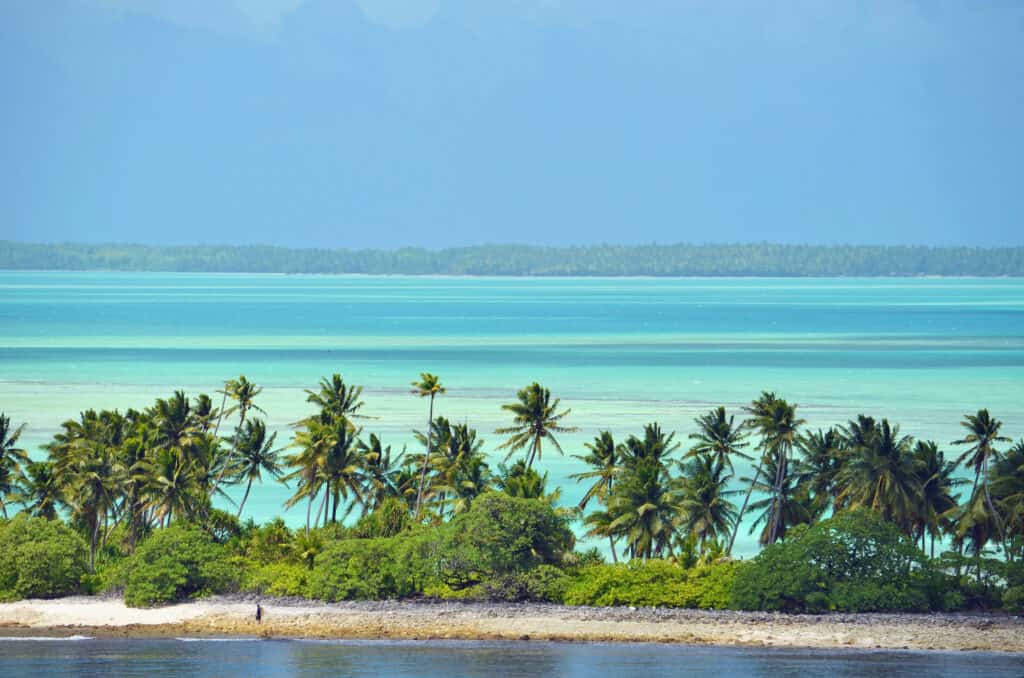Washington is known for having some of the best fishing in the country. The state has many places where people can fish, including lakes, large rivers, and even the Pacific Ocean. The latter is significant because saltwater fishing greatly increases the variety of fish available for anglers. The yellowtail jack is a popular target for anglers fishing for sport because of its potential size and power. Take a look at the largest yellowtail jack ever caught in Washington!
Find out how big it was, where the fish was caught, and how this record compares to the world record for the species!
Habitat and Distribution of the Yellowtail Jack

Yellowtail jack prefer to live in tropical waters.
©iStock.com/EvaKaufman
The yellowtail jack (Seriola lalandi) goes by many names. These include the yellowtail amberjack, amberjack, greater amberjack, or kingfish. These fish rarely live in waters as far north as Washington.
Instead, these fish prefer warm, tropical waters in the Southern Hemisphere, but they often travel to the north during the winter. The yellowtail jack and the California yellowtail (Seriola dorsalis) are seen off the coast of Mexico and California.
On occasion, the species travels farther up the coast to Oregon and Washington. They tend to live near coastal areas and places with rocky reefs when they are adults. Still, these fish are not especially common near Washington. Thus, it’s natural to think that any of the yellowtail jacks in this area are probably not the largest members of the species.
The Species Size and Description

Yellowtail jack can jump out of the water.
©bekirevren/Shutterstock.com
Yellowtail jacks are sometimes confused for yellowfin tuna, but the latter is far larger on average. They do have some common colors between them, including blue, silver, and yellow.
These fish are usually blue on their dorsal side and silvery on their ventral side. The two colors are divided by a yellow-brown lateral line that runs the length of the fish to its tail. The fish have yellow tails, the source of their common name.
Members of the yellowtail jack species grow between 2 and 3 feet on average, but they can grow even longer. Their average weight is between 20 and 40 pounds. Both larger and heavier members of the species have been captured before, though.
These fish usually swim in a school and feed on a variety of foods including:
- Anchovies
- Squid
- Herring
- Prawn
- Small seabirds
These are just some of the foods that the species eat, but others exist.
What Was the Largest Yellowtail Jack Ever Caught in Washington?

The upper dorsal side of the yellowtail is blue, with a silvery-white color on its lower flanks and belly.
©Alessandro De Maddalena/Shutterstock.com
The largest yellowtail jack ever caught in Washington weighed 20.50 pounds. An angler named Jason MacKenzie caught the record-setting fish on August 27, 2011. This record was greater than the former record by 9.75 pounds. The angler set the record near the same area in the state on August 22, 2010.
Jason MacKenzie was fishing with several others on a boat about 50 miles off the coast of Westport. They were catching tuna as part of the Washington Tuna Classic. The angler was using a swimbait when he felt an unusually powerful tug.
The fish put up a 25-minute fight as MacKenize reeled it in. He took it to a local fish seafood market, weighed the fish, and submitted it as a state record. At the time, yellowtail jacks were very rare in the waters near Washington.
Where Is Westport on a Map?
As its name suggests, Westport is on the southwestern coast of Washington. The town has Grays Harbor to its east, a body of water that contains the mouth of the Chehalis River. The Pacific Ocean borders the town to the west.
That makes this area especially good for fishing because people can fish for both saltwater and freshwater species in a somewhat small area. Westport is just about 93 miles from the Seattle-Tacoma Airport in Seattle.
What Other Fish Live Near Westport?

Chinook salmon are a popular sport fish.
©Crystal Kirk/Shutterstock.com
Generally, there are two areas to explore in terms of the fish available in Westport. People can fish in Grays Harbor, or they can fish in the Pacific Ocean. First, let’s take a quick look at the fish that anglers can catch in Grays Harbor. They include:
- Chinook salmon
- Coho Salmon
- Steelhead
- Sturgeon
- Trout
- Halibut
Many other fish are waiting in the Pacific Ocean off the coast of Washington state. Some of the fish that people can catch in this area are:
- Sockeye salmon
- Pacific cod
- Pacific hake
- Chum Salmon
- Rainbow trout
- Rockfish
Many other types of fish live in the Pacific Ocean, of course, but the ones mentioned above are found closer to the coast. Notably, the yellowtail jack is not among the fish commonly caught in coastal areas.
Was the Biggest Yellowtail Jack in Washington the Largest of All Time?

The largest yellowtail jack ever caught was 114 pounds, 10 ounces, captured in New Zealand.
©Photos BrianScantlebury/Shutterstock.com
No, the largest yellowtail jack ever caught in Washington was not the largest of all time. The species does not live in the waters near Washington state in large numbers. The fish typically live in tropical climates and only venture north for a small part of the year, rarely as far north as the Pacific Northwest.
Instead, the largest member of Seriola lalandi was 114 pounds 10 ounces. Two people hold this record, David Lugton and Mike Godfrey. Mike Godfrey caught his record-setting fish at Tauranga, New Zealand in 1984. Lugton caught the record-tying fish on January 9, 1987, at White Island, New Zealand.
The largest yellowtail jack ever caught in Washington was an exceptional specimen given the area in which it was caught. After all, the previous record only weighed 10 pounds. However, the 20.5-pound record is less than a fifth of the all-time record. Given the rarity of these fish in the waters near the Evergreen State, it is doubtful the world record will be taken from the area in the future.
The photo featured at the top of this post is © Alessandro De Maddalena/Shutterstock.com
Thank you for reading! Have some feedback for us? Contact the AZ Animals editorial team.







